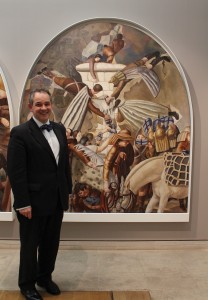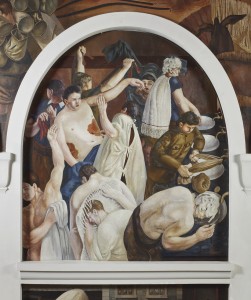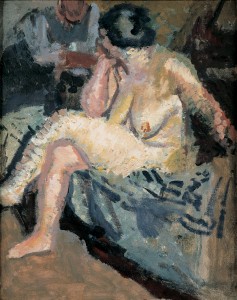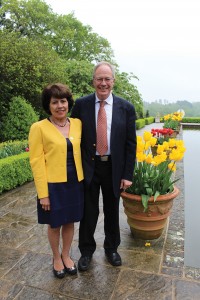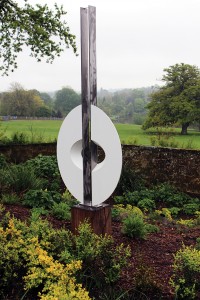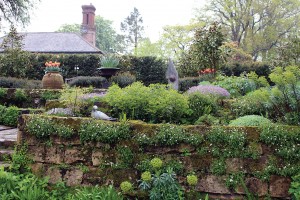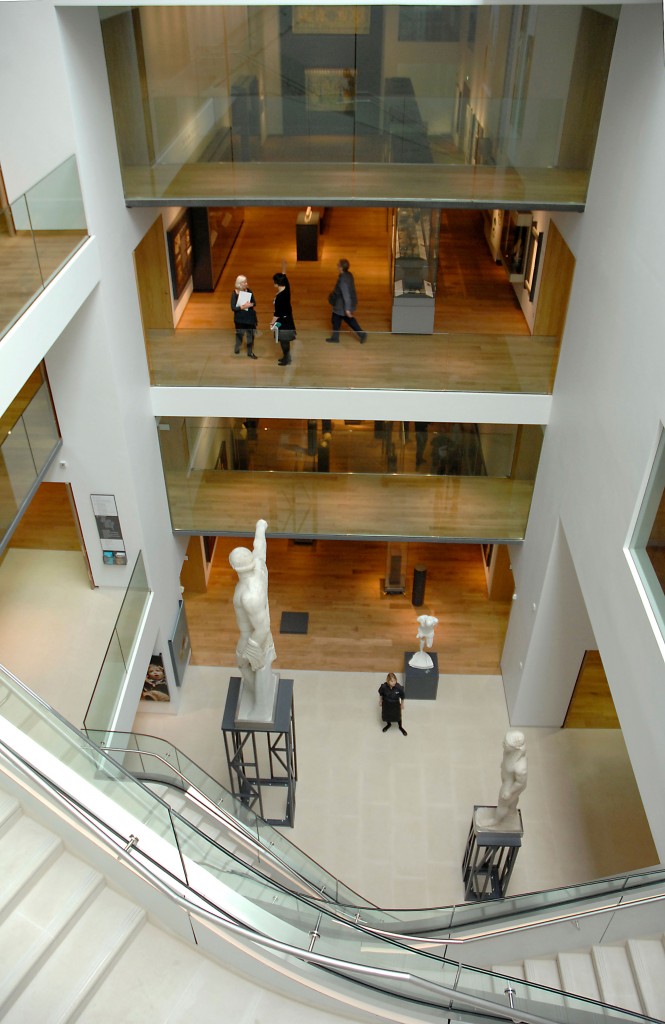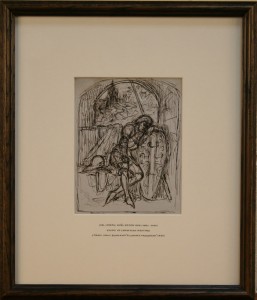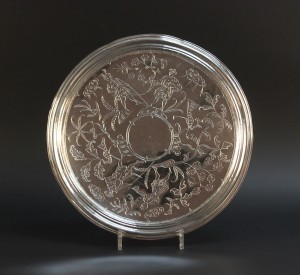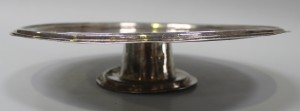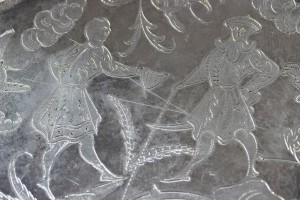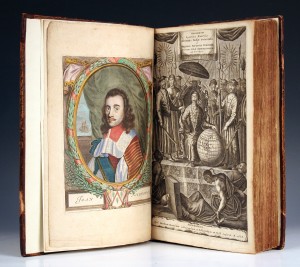
Over the centuries, it has always been the gift of great artists and composers to reflect upon the world we all share and to allow us, through their work, to glimpse something of what lies beyond our immediate perception. It is my experience that truly great music and art, like faith, has the power to transform our human experience of the world – to inspire us.
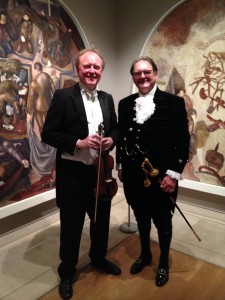
I was delighted to spend much of this last weekend in the company of my great friend Andrew Bernardi at my home church of St Mary’s, Storrington Shipley Arts Festival concert, and at Pallant House Gallery, Chichester for the launch of the ‘1696 Stradivarius’.
Andrew and I both passionately believe that the arts have a tremendously important role in creating community and identity by providing a shared cultural narrative.
With his usual enthusiasm Andrew remarks: “For some fifteen years now I have had a vision as a violinist to acquire an outstanding instrument. I would never have dared to think that today I would be playing the 1696 Stradivarius.” For Andrew it has been an extraordinary journey of courage and determination to acquire this violin and to bring it to Sussex. He acknowledges the generosity and importance of his investors who have made this possible.
Stradivarius made some six hundred violins during his lifetime many of which now reside in museums and bank vaults. It is a rare and marvellous thing to hear the exquisite tone and range of this extraordinary instrument in the hands of a virtuoso musician like Andrew. He is clearly profoundly moved by the experience.
I am grateful that another of my great friends, Jonathan Lucas, the High Sheriff of West Sussex, is at the gallery to celebrate this moment. Jonathan shares our enthusiasm for celebrating and building community. He has a background in choral music having sung in choirs at Cambridge, London and elsewhere. His love and passion for music is expressed as he says, “Andrew’s remarkable contribution in bringing the 1696 Stradivarius to Sussex will provide an unprecedented focus for music and the arts and the opportunity to build up this fantastic community in our county.”
The concert program at Pallant House Gallery was a celebration of the Stanley Spencer exhibition on a theme of reconciliation with music from Sussex and Germany. For me the most moving was ‘The Lark Ascending’ by Ralph Vaughan Williams. The piece was completed the day before the outbreak of World War One. Vaughan Williams soon enlisted as an orderly in the Royal Army Medical Corps reflecting something of Stanley Spencer’s own experience of the war. There is such beauty in this piece as the music gathers and invites us to join with the lark as it rises, falls and turns as though in the soft folds of the Sussex Downs. It never fails to move me. Several of his folk songs came from the fields around Horsham and Monks Gate which he frequently visited. ‘The Lark Ascending’ was amongst the first pieces of music he returned to after the war. It was inspired by the poem of the same title by George Meredith. The following extract from that poem appears on the score:
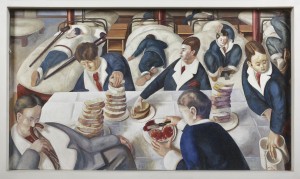
He rises and begins to round,
He drops the silver chain of sound,
Of many links without a break,
In chirrup, whistle, slur and shake.For singing till his heaven fills,
‘Tis love of earth that he instils,
And ever winging up and up,
Our valley is his golden cup
And he the wine which overflows
to lift us with him as he goes.Till lost on his aerial rings
In light, and then the fancy sings.
As you know, I have long advocated that Sussex was a centre for art and music in the Modern British period. With the Shipley Arts Festival under Andrew Bernardi’s directorship and the work of Pallant House Gallery, Sussex, it would seem, is entering a period of renaissance.
When I suggested a fund raising concert to bring together the Shipley Arts Festival and Pallant House Gallery, Andrew Bernardi and I could not have known that it would see the launch of the ‘1696 Stradivarius’. But people who are passionate about music and art should come together, united in celebration of our rich Sussex heritage. I am proud that Toovey’s sponsors these two vital cultural assets in our community.
For details of the remaining concerts in this year’s 2014 Shipley Arts Festival go to www.bmglive.com/shipley-arts-festival. The ‘Stanley Spencer Heaven in a Hell of War’ exhibition at Pallant House Gallery continues until the 15th June 2014. For more information on this exhibition and the gallery’s remarkable permanent collection go to www.pallant.org.uk or telephone 01243 774557.
By Revd. Rupert Toovey. Originally published on 5th June 2014 in the West Sussex Gazette.
